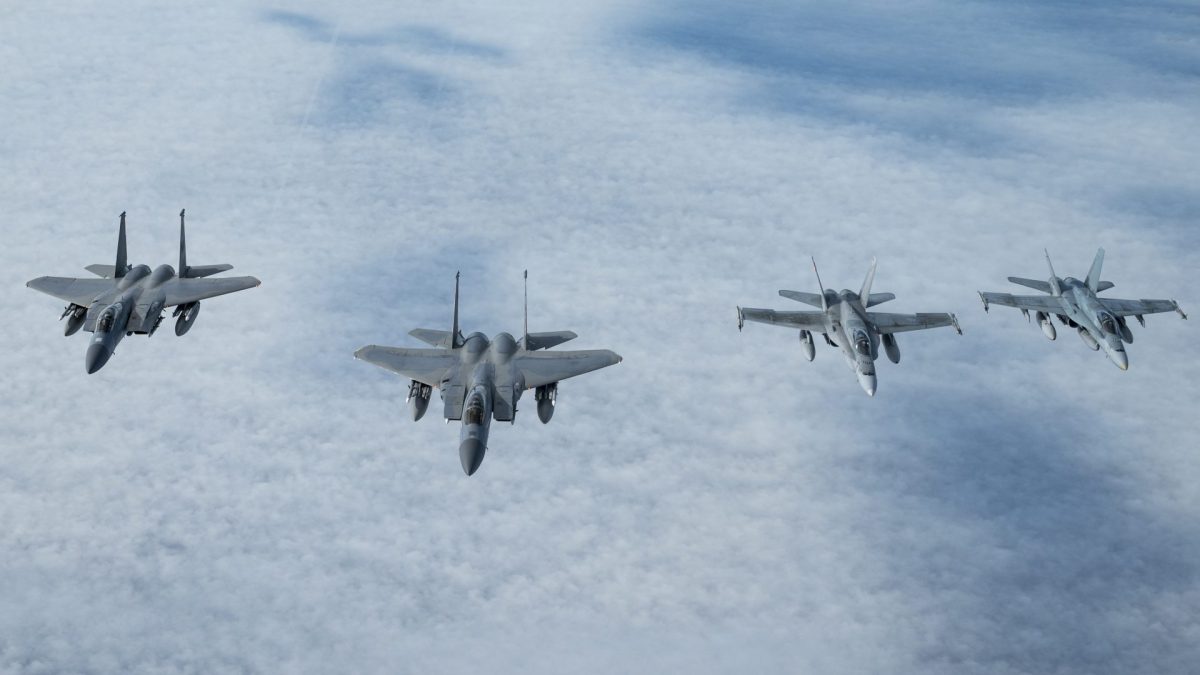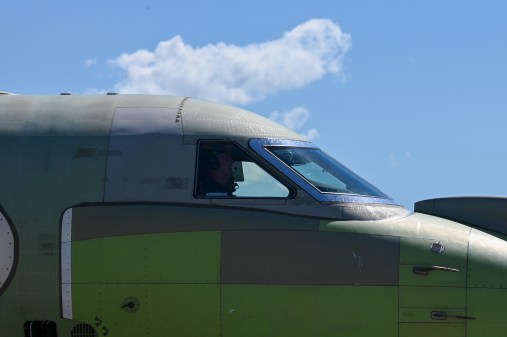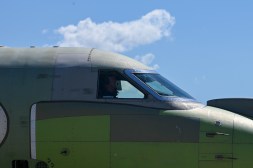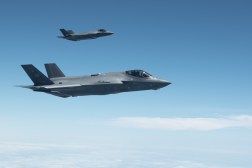Air Force activates two electromagnetic spectrum assessment detachments

Two new entities activated by the Air Force Wednesday will lay the groundwork for creating what one official described as the most important mission within the service’s new electromagnetic spectrum wing.
The Air Force uncased the colors in a ceremony at Robins Air Force Base, Georgia, for the activation of the 350th Spectrum Warfare Wing Detachment 1 and 87th Electronic Warfare Squadron Detachment 1, which will both be focused primarily on assessment. They fall beneath the 350th Spectrum Warfare Wing, which was created in 2021 as a result of the Air Force’s landmark electromagnetic spectrum study to reinvigorate spectrum within the service. The 350th has three primary missions: rapid reprogramming, target and waveform development, and assessment of the Air Force’s EW capabilities.
The two new detachments will contribute to the creation of the 950th Spectrum Warfare Group, which is aimed at enhancing the Air Force electronic warfare assessment programs.
“In my opinion, the group we’re building here today at Robins Air Force Base … has the potential to be the most important of our wing’s three missions,” Col. Joshua Koslov, commander of the 350th, said during the activation ceremony. “The reason for that is that in order to fight this, the conflicts of the future, we’re going to have to know how well we can execute within the contested spectrum in the EW world. And the way we’re going to do that is rigorous assessment, which is a mission set that while we do today, it’s not on the level we need to in the 21st century.”
These assessments will focus on readiness and ensuring systems are capable of successfully engaging in future battles against high-end adversaries.
The electromagnetic spectrum has grown in strategic importance in recent years. Nations such as China and Russia have observed how much the U.S. military depends on it for precision-guided munitions, navigation and communication, and they have sought capabilities to deny access to it.
Future battlefields are expected to be highly contested in the spectrum as each side will seek to jam and deny each other access.
“I want to emphasize the words of the commander of [Air Combat Command], Gen. Mark Kelly, who said if we don’t achieve security in the spectrum, that our forces are going to lose and we’re going to lose fast. The superiority is assured through assessment, which is the mission we’ll be doing here at Robins Air Force Base in Georgia,” Koslov said. “The world’s a dangerous place, we all know that, current events dictates that. While war is not inevitable, the best way to avoid war is to being able to overmatch our opponents with so much capability that they don’t even want to try. That is what the 950th Spectrum Warfare Group is going to bring to us today.”
The wing and group will help establish deterrence of adversary activity, though not through traditional combat power.
“What we need to assess is what are our gaps and seams relative to our adversary and then fill those gaps and seams and then make sure our adversary understands that we filled them, we filled our weaknesses at a rate faster than they can find new ones,” he told reporters. “That’s really the game. The spectrum has never been about overwhelming dominance. The spectrum has always been about moving faster than your opponent, and that’s what the assessment mission is going to provide us the capability to do.”
The wing will continue to invest in its own intelligence personnel while also working with others in the intelligence community to develop capabilities and intelligence required for spectrum warfare to inform leaders on adversary capabilities.
In addition to assessing offensive and defensive EW systems for the Air Force, the group will design techniques and methodologies to assess force packaging and large exercises to allow the service to increase its lethality.
The incoming commander of the detachments noted he wants to help create problems for adversaries in the spectrum.
“The day without spectrum is a bad day, and that’s precisely what we intend on giving our enemies. But the only way we can make sure that it will work and that it’ll all work together when it really counts, is going to be through the hard work that the 950th Spectrum Warfare Group is going to do as soon as it gets stood up here in a couple of months,” Lt. Col. Ryan Cox said during the ceremony.
Koslov told reporters after the ceremony that he has accelerated the timeline for the group to stand up.
“The 950th will complete its programmed growth that’s funded today in 2027. However, we’re accelerating the actual standup by almost three years … by fully standing up the group next summer,” he said.
Cox explained that the 350th Spectrum Warfare Wing detachment 1 is the feeder entity for the 950th and will deactivate the moment that the 950th activates. The 87th Electronic Warfare Squadron detachment 1 is the first initial squadron for the group that will conduct large force assessments.
“The wing detachment turns into the group, the squadron detachment turns into its own squadron — and that’s how we are going to be growing that from an organizational standpoint,” Cox said.
Koslov noted that the wing essentially touches the entirety of the Air Force as it provides combat capability to over 70 platforms.
“That’s basically every single aircraft in our inventory, our weapons system in our inventory — all of it touches the hands of the crows that stood up before you today. We’re not just one wing, we’re every wing in the United States Air Force,” he said.
However, in the future, he wants to see the service shift from a platform-centric model to a more enterprise-focused model.
“The number one need I really need is an integrated EW program executive office, PEO, because right now, today, I reprogram over — I work on over 70 platforms and that’s across more than 25 [system program offices],” he said. “If you’re thinking about the type of capability we’re developing, which is rapid and agile, that requires a level of interoperability and integration. That’s really hard to manage when there’s not one person who’s doing that on the acquisition side. While I do have a very strong relationship on the platform side, a platform-centric model is not the model that will beat China.”






